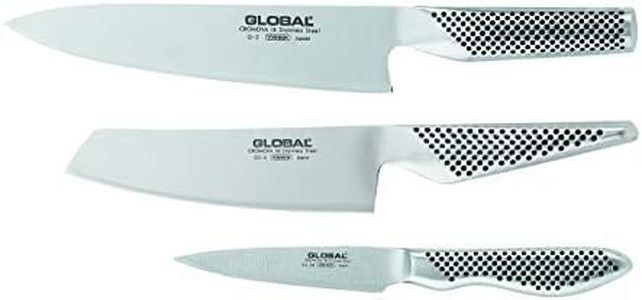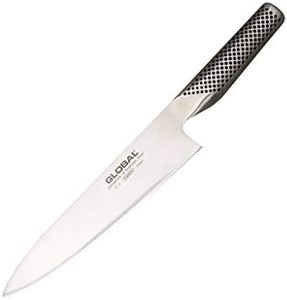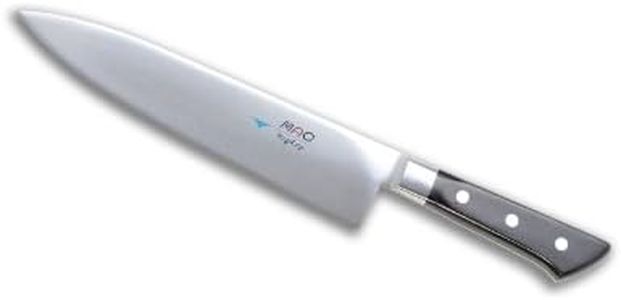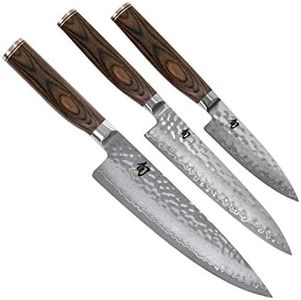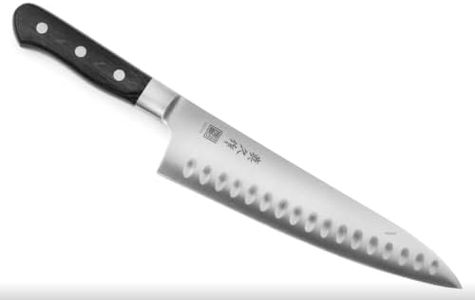We Use CookiesWe use cookies to enhance the security, performance,
functionality and for analytical and promotional activities. By continuing to browse this site you
are agreeing to our privacy policy
10 Best Chef Knife
From leading brands and best sellers available on the web.Buying Guide for the Best Chef Knife
Choosing the right chef's knife can make a big difference in your kitchen experience, from meal prep to cooking larger dishes. A chef's knife is a versatile, essential tool, and finding one that fits your needs makes chopping, slicing, and dicing safer and more enjoyable. When shopping for one, focus on the features that affect comfort, cutting ability, and durability, as these are the factors that impact how the knife feels in your hand and how well it will serve you in the kitchen.Blade LengthBlade length refers to the measurement from the tip of the knife to where the blade meets the handle. Most chef's knives range from 6 to 10 inches. Shorter blades (6-7 inches) are lighter and more manageable, ideal for smaller hands or those who prefer precision tasks. Medium (8 inches) is the classic all-rounder, offering balance between control and efficiency for most kitchen tasks. Longer blades (9-10 inches) are useful for cutting larger items or for those who regularly prepare big meals. The right blade length depends on your hand size, storage available, and the size of food you typically prepare.
Blade MaterialChef's knives are usually made from stainless steel, carbon steel, or various metal alloys. Stainless steel is common due to its resistance to rust and ease of maintenance, making it good for most home cooks. Carbon steel can hold a sharper edge for longer, but it requires regular care to prevent rust. Some modern alloys try to combine the best of both. Your choice depends on whether you prefer easy care or don't mind extra maintenance for a sharper edge.
Blade ShapeThe shape of a chef's knife blade generally falls into two categories: Western (curved edge) and Japanese (straighter edge). Curved edges, often called 'rocker' blades, are suitable for those who prefer a rocking motion when chopping. Straighter-edged blades excel at up-and-down slicing. Consider your chopping style when choosing between these.
Handle MaterialHandles are made from wood, plastic, or composite materials. Wooden handles often feel warm and provide good grip, but may need extra care and are less resistant to moisture. Plastic or composites are easier to clean and more durable, but might be more slippery when wet. If you prep wet ingredients often or use the dishwasher, synthetic handles are generally better.
Weight and BalanceThe weight and balance of a chef's knife determine how it feels during use. Some people prefer a heavier knife for added cutting power; others like a lighter one for quicker, less tiring movement. The knife should feel balanced in your hand, not tipping forward or backward, which reduces strain and gives better control. The best way to judge this is to try holding different weights to see which feels most comfortable for your hand and cutting style.
TangTang refers to how far the blade extends into the handle. A full tang means the metal of the blade runs through the entire handle, usually providing better balance and durability. Partial tangs are lighter and might be sufficient for casual use, but full tang knives are more robust and often feel sturdier in heavy kitchen tasks.
Edge TypeThe edge of the blade can be smooth (straight), scalloped, or have micro-serrations. A smooth edge gives clean cuts, which is great for most tasks. Scalloped or micro-serrated edges stay sharper longer and are useful if you don’t want to sharpen often, but they don't slice as cleanly and are harder to sharpen. Most home cooks prefer a standard smooth edge for its versatility and easy maintenance.
